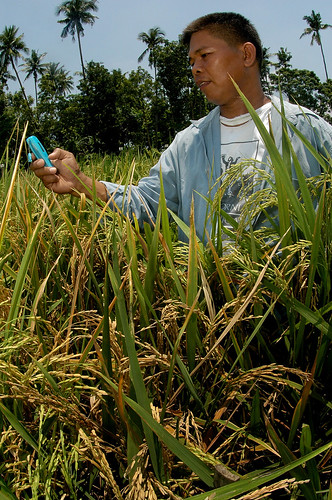Mobile Banking in Latin America

Latin America has a big challenge to decrease the population of people without a bank account. In this part of the world approximately less than 20% of population have access to financial products[1], which is a huge opportunity risk for banks. This issue can be addressed in different directions and using mobile technology can be one of the ways to do it.
The adoption rate of mobile phones in Latin America on average is close to the 90%[2], and is dominated by non-smartphones which are used together with prepaid cards. This market sets the rules for a potential financial solution: support for basic banking operations (i.e. account balance, money transfer, etc…) with an easy to use and simple user interface.
Why would people use it?
The only competitor for a banking solution in this context is the cash usage and the culture of the people. They feel safer keeping their money at home instead of a bank and bringing defined amounts of cash with them every day. So why would they stop doing that and start to pay for mobile banking?
The new service of the Colombian Davivienda Bank called DaviPlata is a good approach. They partnered with Tigo and ComCel, two Colombian cell phone providers, to add functionality to the SIM cards for their customers to send and receive money and make withdrawals from their cellphones at no cost … yeah, no cost!
The service is simple: You can only add money to your cellphone from a Davivienda account or an other cellphone which uses the DaviPlata service. Then you can pay public services, make money transfers to other cellphones in the DaviPlata network or withdrawals using Davivienda ATMs.
From where the business comes them? I think this is great way to capture new clients. Imagine this in the context of a family: a parent opens an account in Davivienda to be able to send money out to his sons cellphone account using DaviPlata or to pay government taxes with it.
As I said in my previous post, mobile banking will be a driver to promote a new wave of customers in low-income areas and as we see in the case of DaviPlata, this business model is the key.
References.
[1] Más allá de las sucursales: Banca móvil en América Latina. Business News Americas Marzo 2011.
[2] GSMA Deployment Tracker: http://www.wirelessintelligence.com/mobile-money/